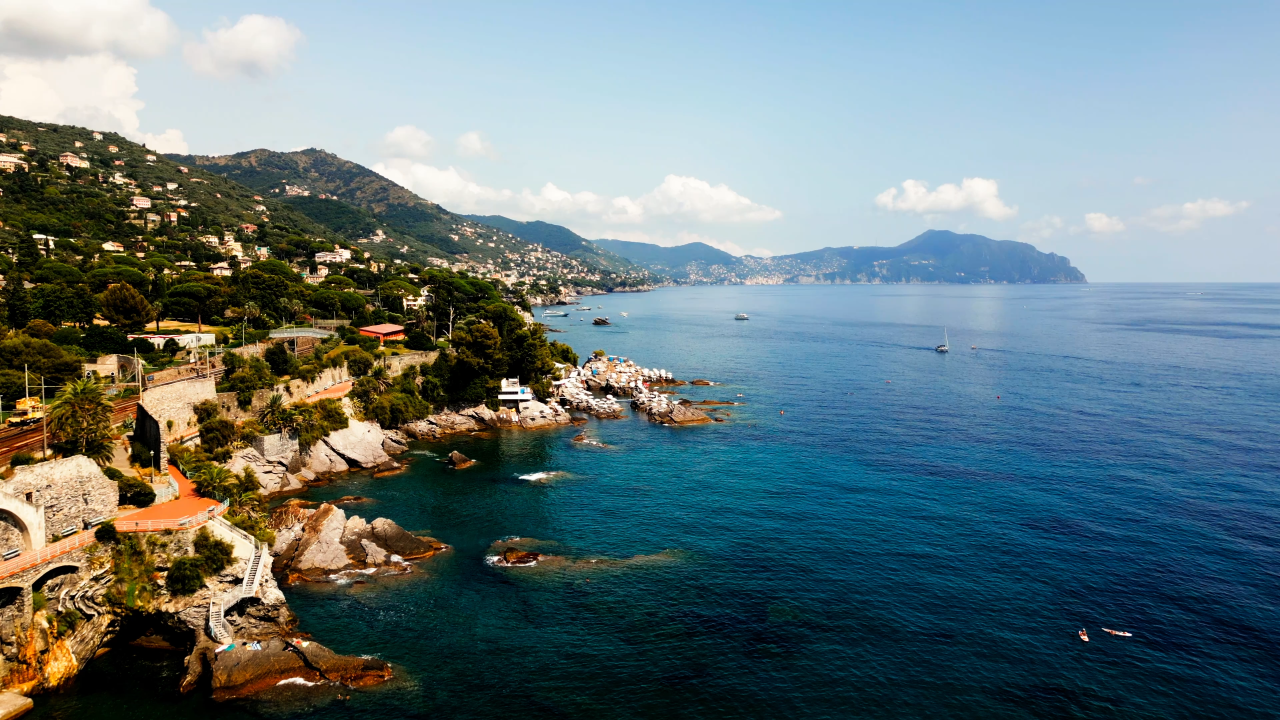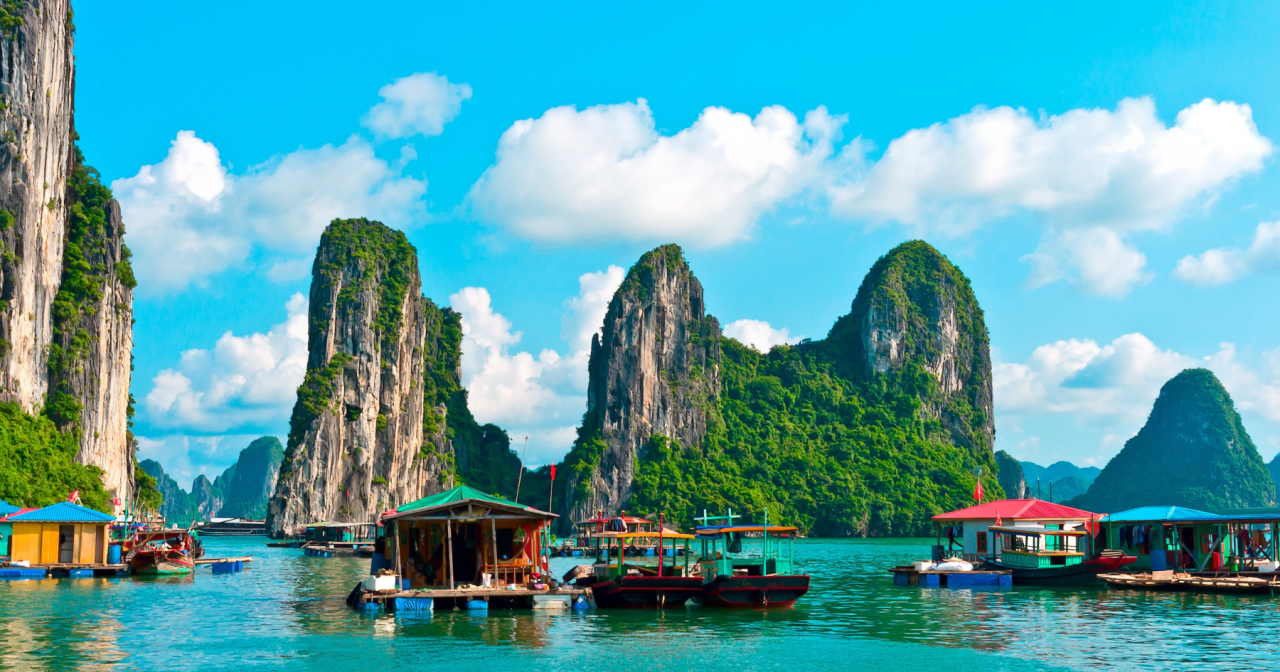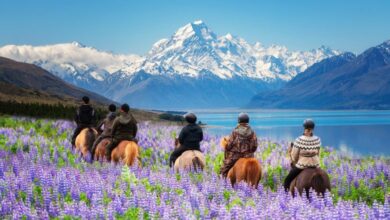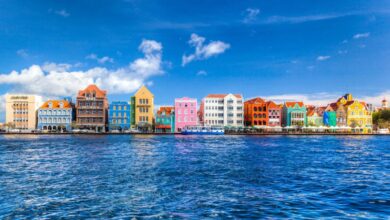The Global Shift Towards Undiscovered Travel Destinations
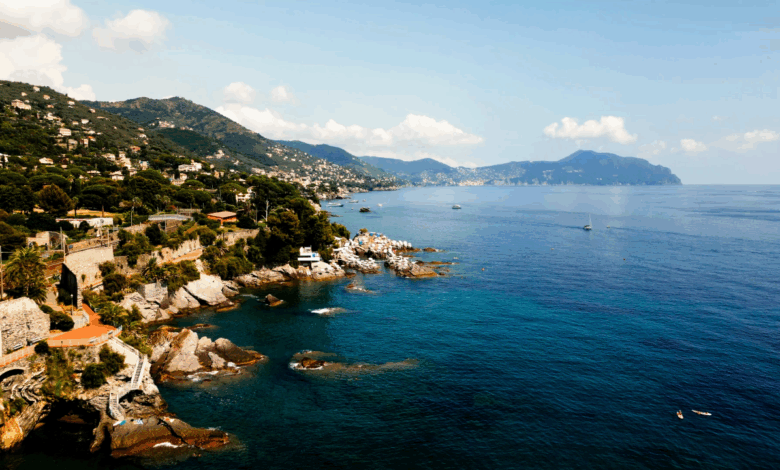
The End of the Tourist Trail
For decades, the global travel itinerary was largely predictable: Paris, Rome, Bali, New York. Iconic landmarks like the Eiffel Tower, the Colosseum, and Times Square were the ultimate trophies for any traveler. However, a profound and permanent shift is underway. A growing cohort of modern explorers is turning away from the saturated, often overwhelming, traditional hotspots in favor of offbeat, under-the-radar destinations. This is not a fleeting trend but a fundamental transformation in the philosophy of travel. Driven by a desire for authenticity, sustainability, and unique experiences, travelers are venturing beyond the guidebook to forge their own paths. This movement is redefining the tourism landscape, offering economic lifelines to lesser-known communities while providing a more rewarding and personal journey. This article delves deep into the powerful forces fueling this exodus from the ordinary, explores the tangible benefits of choosing the road less traveled, and provides a practical guide to discovering your own hidden gem.
A. The Catalysts: Why Travelers Are Seeking Alternatives
The migration towards unconventional destinations is not accidental. It is a calculated response to several key pressures and evolving desires within the modern traveler’s psyche.
A.1. Overtourism and the Quest for Solitude
The phenomenon of “overtourism” has reached a tipping point in many world-famous cities and landmarks. The consequences are palpable:
-
Degraded Visitor Experience: Interminable queues, crowded viewpoints, and a constant struggle for space diminish the magic of any destination. The desire to see the Sistine Chapel is tempered by the reality of being herded through it in a crowd of thousands.
-
Strain on Local Infrastructure: Overtourism places an unsustainable burden on local resources, from waste management and water supply to public transportation, often leading to resentment from residents.
-
Environmental Damage: The sheer volume of visitors accelerates the wear and tear on fragile ecosystems and historical sites, threatening their long-term preservation. In response, travelers are actively seeking destinations where they can breathe, reflect, and connect with a place without the oppressive presence of crowds.
A.2. The Digital Exhaustion and Search for Authenticity
In our hyper-connected digital age, the search for genuine, uncurated experiences has become more intense. Social media feeds are saturated with identical photos from the same angles at the same locations. This has created a sense of “been there, seen that” even for places one has never visited. The modern traveler craves stories, not just snaps. They want to:
-
Engage in Meaningful Cultural Exchange: This means sharing a meal with a local family, learning a few words of a dialect, or understanding local traditions beyond a performance staged for tourists.
-
Encounter the Unscripted: The most memorable travel moments are often the unplanned ones—a spontaneous invitation, a local festival not listed in any guide, a hidden waterfall discovered by chance. Offbeat destinations are fertile ground for these authentic, unpredictable encounters.
A.3. The Rise of the Experiential Traveler
There is a clear generational and philosophical shift from collecting passport stamps to collecting experiences and skills. Modern travelers, especially Millennials and Gen Z, prioritize what they do over what they see. They are driven by:
-
Skill-Based Learning: This includes everything from taking a traditional weaving workshop in a Guatemalan village to learning survival skills in the Scandinavian wilderness.
-
Voluntourism and Purpose-Driven Travel: Many seek to contribute positively to the communities they visit, participating in conservation projects or community-led initiatives.
-
Personal Transformation: Travel is increasingly viewed as a tool for self-discovery and growth, goals that are more readily achieved in challenging, unfamiliar environments than in a comfortable, all-inclusive resort.
A.4. The Economic Allure of Affordability
The basic laws of supply and demand make offbeat destinations significantly more affordable. With lower costs of living and less tourist inflation, your travel budget stretches much further.
-
Accommodation and Dining: A charming, family-run guesthouse and a meal at a authentic local eatery in an undiscovered region can cost a fraction of the price of a standard hotel and restaurant in a tourist capital.
-
Activities and Souvenirs: Tours, guides, and handicrafts are often more reasonably priced, allowing for a richer experience without the financial strain.
B. The Ripple Effect: The Multifaceted Impact of Alternative Tourism
Choosing an offbeat destination creates a powerful positive feedback loop that benefits the traveler, the local community, and the environment.
B.1. Economic Empowerment and Distributed Wealth
Mainstream tourism often results in “economic leakage,” where a significant portion of the revenue generated ends up with international hotel chains, airlines, and tour operators, bypassing the local economy. Offbeat travel reverses this trend.
-
Direct Local Revenue: Spending money on local guides, homestays, farm-to-table restaurants, and artisan workshops ensures that income goes directly into the pockets of community members.
-
Job Creation and Diversification: The growth of tourism in a new area creates opportunities for entrepreneurs and supports a wider range of livelihoods, from guides and cooks to drivers and crafters, reducing reliance on a single industry.
-
Incentive for Cultural Preservation: When local communities see that their traditional crafts, architecture, and way of life have economic value, it provides a powerful incentive to preserve them rather than abandon them for modernization.
B.2. Environmental Sustainability and Conservation
By diverting traveler traffic away from environmentally stressed hotspots, this trend acts as a form of natural crowd control.
-
Reduced Pressure on Fragile Ecosystems: Sensitive areas like coral reefs, ancient forests, and historical monuments in overtouristed locations get a much-needed respite.
-
Funding for Conservation: In many emerging destinations, tourism revenue is directly linked to conservation efforts. Park entry fees, payments for wildlife guides, and community-run conservancies rely on visitors to fund their vital work protecting biodiversity.
B.3. Cultural Preservation and Authentic Exchange
When tourism arrives gradually and respectfully in a new destination, it fosters a different kind of cultural interaction.
-
Pride in Heritage: As outsiders show genuine interest in their culture, locals often develop a renewed sense of pride in their traditions, language, and history.
-
Two-Way Learning: The exchange becomes mutual. Travelers learn about a different way of life, while locals gain a window to the outside world, breaking down stereotypes and fostering global understanding.
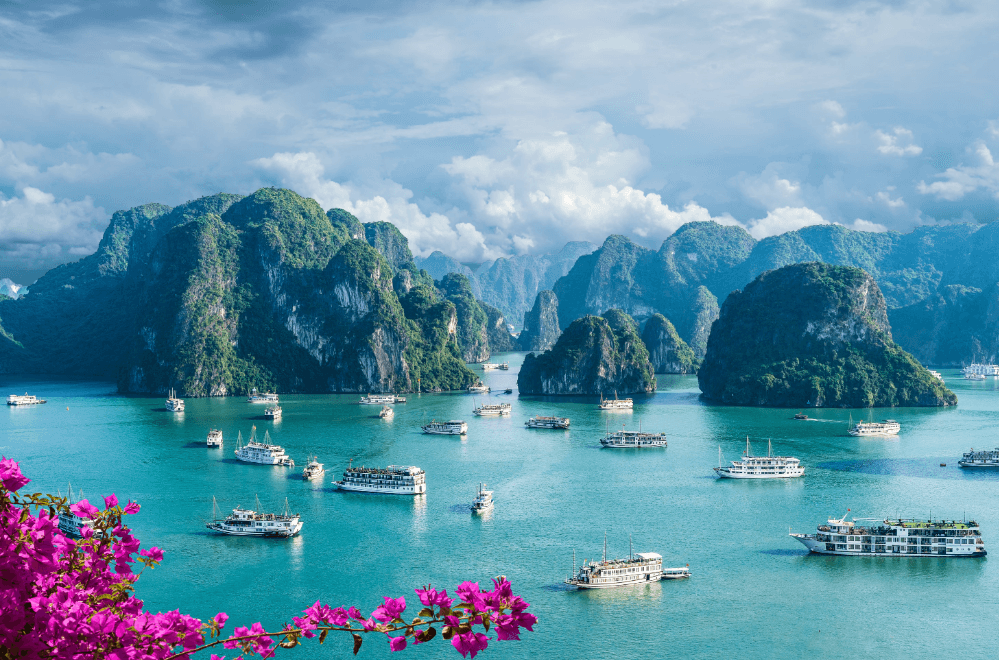
C. A World of Hidden Gems: Offbeat Alternatives to Classic Destinations
To make this shift practical, here are concrete examples of how to swap a crowded classic for an equally stunning, less-visited alternative.
C.1. Instead of Croatia’s Dalmatian Coast, Consider Albania’s Riviera
While Dubrovnik and Split buckle under the weight of cruise ship crowds, Albania’s Ionian coast offers a breathtaking and affordable alternative. With pristine beaches like Ksamil, ancient ruins at Butrint, and the charming town of Himarë, you can experience the beauty of the Mediterranean without the masses.
C.2. Instead of Iceland’s Golden Circle, Explore Greenland’s Arctic Wilderness
Iceland’s well-trodden circuit is a testament to its beauty, but also to its popularity. For a truly raw and otherworldly Arctic experience, Greenland is the next frontier. Here, you can witness colossal icebergs in Ilulissat Icefjord, experience Inuit culture firsthand, and see the Northern Lights with virtually no light pollution.
C.3. Instead of Thailand’s Islands, Discover the Philippines’ Palawan
Thailand’s islands like Phuket and Phi Phi are legendary for a reason, but development has been intense. For turquoise waters, dramatic limestone karsts, and a more laid-back atmosphere, the Philippine archipelago of Palawan is unparalleled. From the subterranean river in Puerto Princesa to the idyllic lagoons of El Nido and Coron, it remains a paradise for explorers.
C.4. Instead of Italy’s Amalfi Coast, Wander Slovenia’s Soca Valley
The Amalfi Coast is synonymous with glamour, but also with traffic jams and premium prices. For a different kind of European beauty, head to Slovenia’s Soca Valley. This emerald-green river, winding through the Julian Alps, offers world-class hiking, white-water rafting, and charming, affordable villages like Bovec and Kobarid.
C.5. Instead of Machu Picchu, Peru, Trek to Choquequirao, Peru
Machu Picchu’s visitor numbers are tightly controlled for a reason. For a truly adventurous Inca experience, undertake the challenging trek to Choquequirao, often called Machu Picchu’s “sister city.” This sprawling archaeological site, perched on a mountain ridge, receives a mere fraction of the visitors, offering a sense of discovery and solitude that is now rare at its famous counterpart.
D. The Responsible Explorer’s Toolkit: How to Travel Offbeat Ethically
Venturing into less-developed tourist destinations comes with a heightened responsibility. Doing it right ensures your impact remains positive.
D.1. Meticulous Research and Cultural Preparation
Your journey begins long before you leave home.
-
Understand Local Customs and Etiquette: Learn about appropriate dress, greeting styles, and social norms. A little effort goes a long way in showing respect.
-
Learn Basic Phrases: Knowing how to say “hello,” “thank you,” and “please” in the local language bridges gaps and builds immediate rapport.
-
Research the Political and Social Context: Be aware of any local sensitivities or tensions to ensure your presence is appropriate and welcome.
D.2. Prioritizing Local and Community-Based Services
Make a conscious choice to embed yourself in the local economy.
-
Choose Homestays and Family-Run Guesthouses: This provides an authentic window into local life and directly supports families.
-
Hire Local Guides: No one knows a place better than someone who calls it home. They can provide context, stories, and access you would never find on your own.
-
Eat at Local Markets and Restaurants: This is not only cheaper and more delicious but also supports local farmers and chefs.
D.3. Embracing the “Leave No Trace” Philosophy
In fragile, emerging destinations, your environmental footprint is critical.
-
Pack Out All Waste: Be prepared to take your non-biodegradable trash with you if proper disposal facilities are unavailable.
-
Respect Wildlife: Maintain a safe distance and never feed wild animals.
-
Conserve Resources: Be mindful of your water and energy usage, especially in regions where these are scarce.
D.4. Managing Expectations and Embracing Flexibility
Offbeat travel is synonymous with adventure, which by nature involves unpredictability.
-
Infrastructure May Be Basic: Embrace bumpy bus rides, intermittent electricity, and simple accommodations as part of the experience.
-
Plans May Change: Weather, local events, or transportation delays are common. Patience and a flexible itinerary are your greatest assets.
-
The Reward is in the Journey: The challenges themselves often become the most cherished stories upon your return.
Conclusion: The Future of Travel is Personal and Purposeful
The movement towards offbeat destinations is more than a travel trend; it is a conscious evolution in how we engage with the world. It represents a collective yearning for depth, connection, and responsibility over convenience and checklist tourism. This paradigm shift promises a future where travel is a force for good—distributing economic benefits more equitably, alleviating the environmental strain on our planet’s most loved places, and preserving the unique cultural fabric of communities worldwide. For the traveler, the reward is immeasurable: the profound joy of discovery, the warmth of genuine human connection, and the creation of memories that are uniquely, authentically their own. The map is vast, and the most remarkable stories are often found not at the end of the beaten path, but where it disappears entirely.
Tags: offbeat travel, undiscovered destinations, sustainable tourism, overtourism, alternative travel, responsible travel, hidden gems, travel trends, authentic experiences, community-based tourism, adventure travel, digital detox

